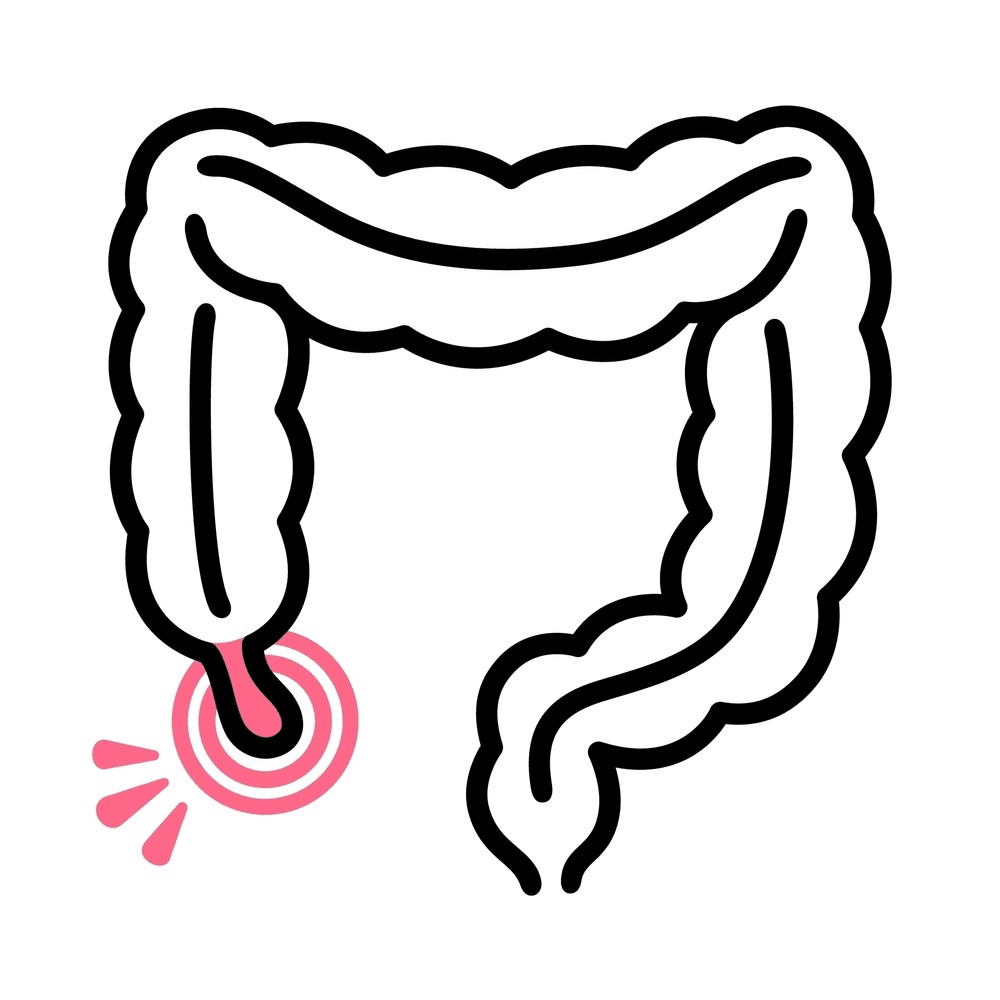What Causes It?
Obstruction of the appendiceal lumen, often by fecal matter
Enlarged lymphoid follicles due to viral infection
Parasites or foreign bodies
Inflammatory bowel disease
Tumors (rarely)
Bacterial infection
Trauma to the abdomen
Family history may increase risk
Age (more common in individuals between 10 and 30 years)
Signs & Symptoms
Sudden pain that begins around the navel and often shifts to the lower right abdomen
Pain that worsens with movement, coughing, or deep breathing
Nausea and vomiting
Loss of appetite
Low-grade fever that may worsen as the illness progresses
Constipation or diarrhea
Abdominal bloating
Inability to pass gas
Rebound tenderness (pain when pressure is released from the abdomen)
In case of rupture: severe pain throughout abdomen and high fever
